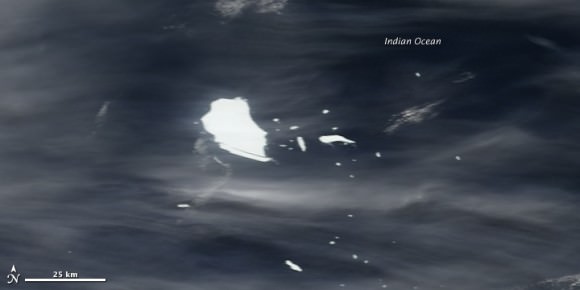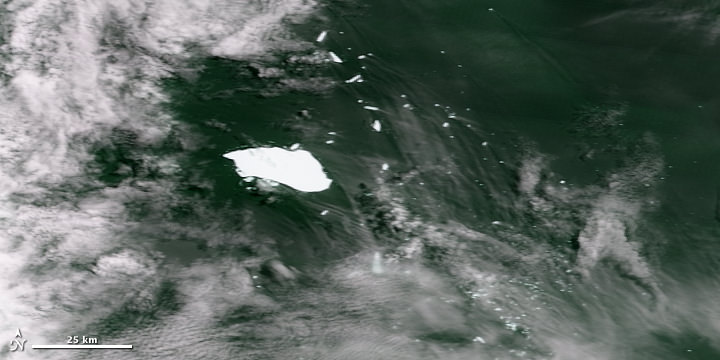Iceberg B17-B Adrift Off the Southwestern Coast of Australia as seen on Dec. 11, 2009. Credit: NASA Earth Observatory
A city-sized iceberg that has been making its way towards Australia’s southwestern coast is now breaking up into hundreds of smaller icebergs as it drifts into warmer waters. This is creating potentially hazardous conditions for ships trying to navigate the region. The iceberg, known as B17B, was spotted last week on satellite imaging about 1,100 miles (1,700 kilometers) off Western Australia state, prompting Australia’s Bureau of Meteorology to issue a shipping alert. When first observed, B17B was a whopping 140 square kilometers (54 square miles). Now, it is about 115 square kilometers (44 square miles), or around 18 kilometers (11 miles) long and 8 kilometers (5 miles) wide, said glaciologist Neal Young of the Australian Antarctic Division. Still, that is one huge iceberg.

B17B has broken up into hundreds of smaller icebergs, some up to several kilometers wide, and spread over more than 1,000 kilometers of ocean. Young said he expects it to dissipate, but is unsure when that will happen.
The iceberg is one of several that split off in Antarctica in 2000 when parts of two major ice shelves — the Ross Sea Ice Shelf and Ronne Ice Shelf — fractured.
Icebergs frequently split or “calve” off Antarctica’s ice shelves, and they often get swept up in strong circumpolar currents that carry them around the icy continent. Occasionally icebergs drift northward, out of the continent’s orbit. Only rarely, however, do icebergs drift as far north as Australia without melting, which is why scientists were surprised to spot this especially gigantic iceberg in its current location.
Sources: NASA Earth Observatory, AP
Here are some cool iceberg pictures.

